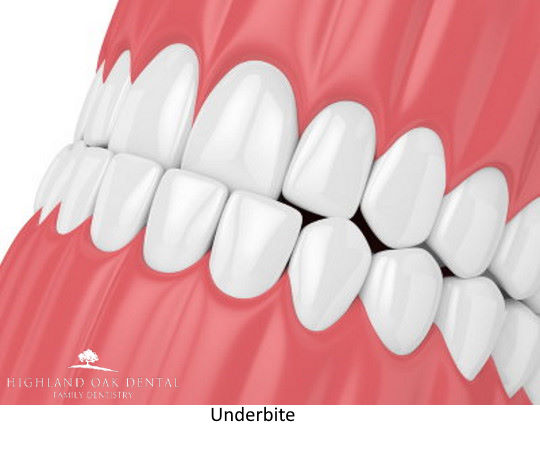- 214-308-5359
- Mon – Fri: 9:00 AM – 5:00 PM
- 5444 FM 423 Ste 600, Frisco, TX 75036
A lower jaw that protrudes forward is referred to as an underbite in dentistry. As a result, the lower jaw extends beyond the upper teeth. The severity of the underbite can range from minor to severe, with the lower jaw overlapping the upper jaw and the teeth failing to contact due to the gap in teeth.
What Causes an Underbite? | What issues does an underbite cause? | How to Treat an Underbite | Overbite Vs Underbite

Normally, your teeth develop in such a way that the top teeth fit over the lower teeth. The molars must be able to fit together. A person’s development of such a disease, however, is caused by a number of variables. Among them are the following:
If a member of your family has the illness, you are more likely to have it as well. Genetics also determines the form and size of a person’s jaw and teeth.
As a result, some teeth are born with teeth that are too close together, impacted, do not grow all of their teeth (hypodontia), are irregularly shaped, overjet, or do not fit together.
Some childhood practices can aid in the development of an underbite. These are the habits:
Tumors in the jawbones or the mouth may cause the jaws to protrude, resulting in an underbite.
An underbite is more than simply an aesthetic concern. The American Dental Association (ADA) specifies that the more serious this issue is, the more likely it is to produce oral health complications such as:
In addition, if you have a visible underbite, it will impact your confidence.
It is the most often used orthodontic treatment for underbite. Dental braces are not discreet and can be seen when speaking or smiling. This is fixed using clear aligners.
Extraction of a tooth can reduce crowding and allow for more natural biting.
Certain equipment can be used to cure such a situation. These are custom-made for your mouth and, because they are more visible than braces, might be painful at times. Orthodontists prescribe this therapy when it is essential.
The reverse full facemask is one type of orthodontic device. This item looks like orthodontic headgear that wraps around your head. This method of treating underbite entails connecting metal bands to your upper back teeth, allowing the device to gently pull your upper jaw into appropriate alignment.
The upper jaw expander is another form of dental device. With a screw in the centre, the upper jaw expander fits over the rear teeth of the upper jaw. The purpose is to broaden the upper jaw, increase the dental arch, and shift the teeth within the bone. However, the pathology of the maxilla and mandible must be considered.
When the orthodontist considers that all other treatments have failed, this should be considered as a last resort. It only occurs on rare instances since surgery is rarely required to address an underbite.
Orthognathic surgery is a kind of jaw surgery. This is a customised technique that includes separating your jawbones and making unique changes to your jaw alignment.
If you have cleft lip and palate, you may need surgery before fixing your underbite.
When your mouth is closed, you have slight overbite if your upper teeth overlap your bottom teeth too much. When you have a smaller jaw or your lower jaw is shorter than your upper jaw, you are more likely to have this issue. If your underbite is the result of crowded teeth or a poor jaw position, fixing underbite with invisalign is the ideal treatment.
When you close your mouth, your lower jaw will sit in front of your upper jaw, resulting in an underbite. When you have this issue, you will commonly appear to have a projecting chin, although in less severe situations, this may be more subtle. Schedule an appointment for consultation with our dentist.
At Highland Oak Dental, our vision is to establish a trusted dental practice renowned for exceptional care, rooted in quality, compassion, and a comprehensive approach.